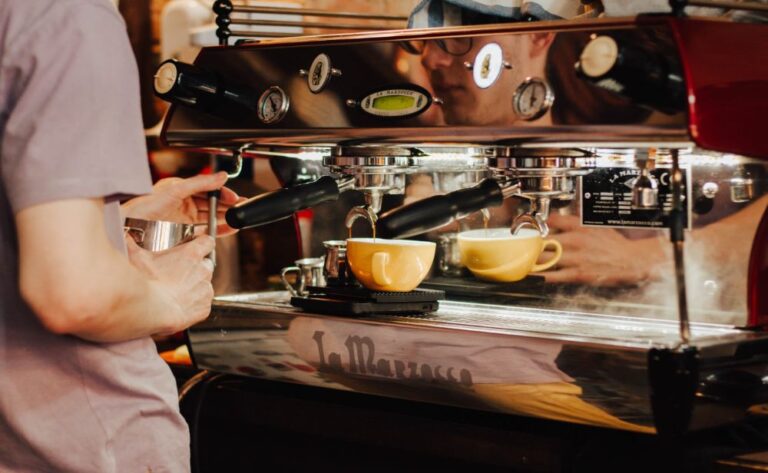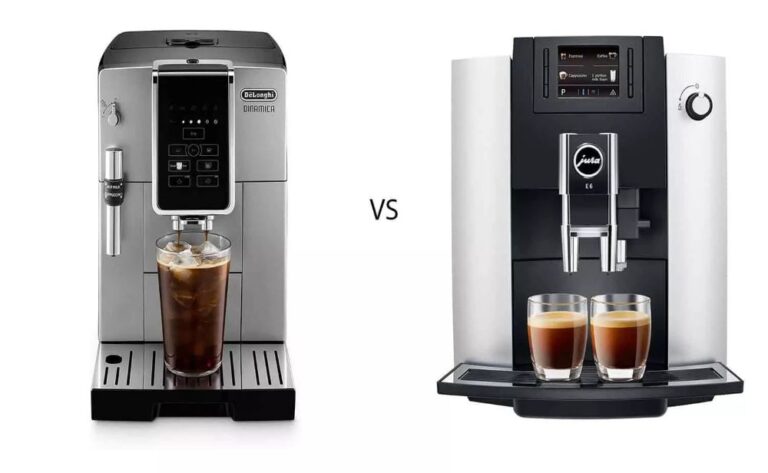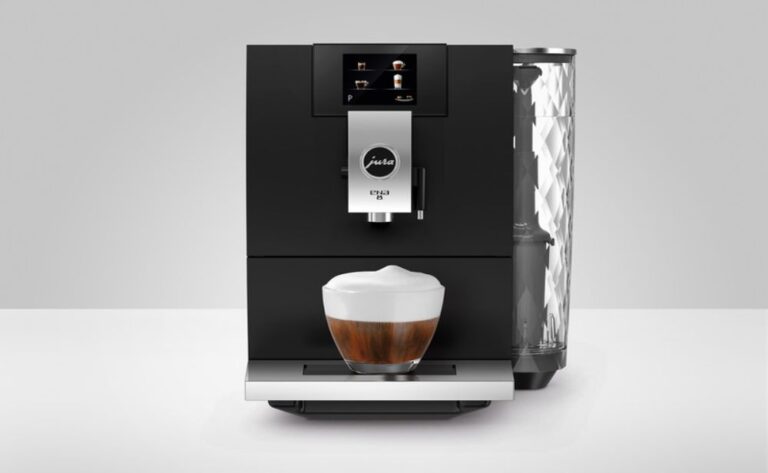
Are you in a hurry? The Breville Barista Touch is the best coffee maker in our opinion.
On the market today, some of the most reliable espresso makers can be found produced by Breville.
The Barista Pro and the Barista Touch are two of the most impressive coffee makers that Breville has to offer.
But which of these options should you go with?
I’m going to compare the Breville Barista Pro against the Touch, and then I’ll give you my verdict on which one is superior.
I’ll give you an overview of each one, and then compare the features of each of them against one another.
Let’s get to it!
A Speedy Discussion Regarding the Breville Barista Pro
Breville is an Australian firm that has been operating in the market for home appliances for some time.
On the other hand, their espresso machines are a more recent purchase. Having said that, their machines are at the forefront of the industry.
The Barista Pro doesn’t break the mold in any way.
It’s a wonderful Breville espresso machine for those just starting out.
The body of the Barista Pro coffee machine is made of stainless steel, and it features tactile buttons, an LCD screen for the user interface, and an integrated grinder.
If you are limited in the amount of space you have available on the counter, the grinder is an excellent investment. The grinder that comes with the Barista Pro has 30 various grind settings, which means that you will be able to choose a setting that is suitable for any type of coffee.
Both the bean hopper and the water tank hold adequate quantities of 12 pound and 67 ounces of liquid, respectively. That is a sufficient amount of beans and water to make numerous beverages before you will need to restock.
Because the Barista Pro can generate up to 15 bars of pressure, you can certain that the extraction of every coffee will be of high quality and consistent.
The steam wand is the one thing that is less than ideal. Because it’s completely manual, you’ll need to keep a close eye on the milk while it’s being frothed.
Pros
• Integrated grinder with 30 different settings allows you to conserve counter space and ensures that you will always obtain uniform grinds.
• Because of the large bean hopper and water tank, you may prepare a series of beverages without having to stop and reload the machine.
• Thanks to its ThermoJet heating system, your machine is able to start brewing in just three seconds.
• Because the Italian Pump has 15 bars of pressure, it ensures that the extraction of each coffee will be uniform.
Cons
• Because the steam wand is manually operated, you will be required to learn how to froth milk.
• The user interface appears antiquated in comparison to that of the Barista Touch
An In-Depth Analysis Of The Breville Barista Touch
The Breville Barista Touch is the Breville Barista Pro’s older and more sophisticated sibling.
It shares many of the same characteristics, such as the grinder, the heating system, the bean hopper, and the size of the water tank.
However, it has been improved in certain ways.
The entire user interface is a touchscreen, there is a capacity for saving up to 8 individual drinks, and the steam wand may be operated either automatically or manually.
The primary focus of the update of the Barista Touch was the user interface. Is it an improvement?
Who’s to say? For me, buttons and other tactile sensations are more satisfying, yet it’s common knowledge that touchscreens have dependability difficulties.
The automated steam wand is one of my favorite features. It is a hands-free method of foaming milk, allowing you to just set it and forget it. It also indicates that you have the ability to select from a selection of pre-programmed beverages, such as lattes or cappuccinos.
The machine’s grinder is still an integral part of the device, and it offers the same 30 different grind sizes.
The Barista Touch comes at a premium in terms of cost. For precisely what are you making this payment?
To put it simply, for the sake of some convenience. Absolutely not for the purpose of performance.
It’s a nice investment if you appreciate the touchscreen and the customizable drink options, both of which are included in the package. But if it isn’t, then there’s no point in trying.
Pros
• Thanks to the ThermoJet heating system, brewing may be done in just three seconds.
• You have the option of using an automatic or manual steam wand, giving you more control over the texture of the froth atop your milk.
• A touchscreen interface and up-to-date software allow you access to a pre-programmed menu and eight slots for personalizing your drinks.
• 15 bars of pressure guarantees you receive consistent extraction every time
Cons
• The convenience, but not the performance, is what drives up the price.
• There are issues with the touchscreen when it is used frequently.
The Comparison of the Breville Barista Pro and the Touch
Now it’s time to find out which of these two machines is superior by pitting them against one another.
I’ll take you through each feature, and then explain why I think one stands out from the rest as being superior.
How are they fashioned, exactly?
When I’m looking to buy an espresso machine, the body is the primary consideration for me. Plastic bodies on espresso machines are sometimes acceptable, but more often than not, they are an indication that the manufacturer skimped on the materials.
A body made of stainless steel does more than simply look fantastic; it also serves the purpose of protecting all of the technology that is underneath it.
Both the Barista Pro and the Barista Touch feature bodies made of stainless steel, but their bean hoppers and water tanks are made of plastic.
In point of fact, in terms of the overall design, they are virtually indistinguishable from one another. The user interface is the only distinguishing feature between the two.
The Barista Pro includes buttons and a dial for adjusting the grind size, in addition to an LCD screen. A comprehensive touchscreen display can be found on the Barista Touch espresso machine.
Buttons are more convenient for me personally. My experience has shown me that using touchscreen displays requires you to navigate through a great deal of menus before you can locate the settings you need.
Because buttons place all of its functions in plain sight and close proximity to one another, using a button-based interface is typically simpler.
The programmability of the touchscreen display is the sole advantage it possesses. The Barista Touch features an entirely pre-programmed menu as well as eight individual drink slots that may be saved in advance.
The fact of the matter is, however, that the Barista Touch is merely a semi-automatic model. This implies that you will still be responsible for grinding the coffee beans, tamping them, positioning the portafilter, and pouring the milk.
Are there any distinguishing characteristics amongst the grinders?
The grinder is the most essential component when it comes to making coffee. If you do not have a good grinder, it does not matter how high-quality the coffee beans themselves are; you will still end up with an inferior cup of coffee.
What makes a grinder worth using? There are essentially two distinct categories of grinders on the market today: blade grinders and burr grinders.
Comparing a blade grinder to a burr grinder is like comparing a garlic press to a knife. When you use a garlic press, all of the garlic is pushed through holes of the same size, which results in a clove of garlic that is clean and uniform in texture, which you can then use in your recipes.
You can still get acceptable results when you work the garlic with a knife, but the texture of the garlic won’t be as fine or as constant as when you use a garlic press.
A garlic press is an example of a burr grinder, while a knife is an example of a blade grinder.
Can you tell me about the grinder that comes with the Barista Touch and the Barista Pro?
A hardened steel burr grinder.
Yes, the grinder is shared between the two machines. And the grinders on both of these machines are of such a great quality that I would buy one on its own if it were available for purchase separately.
The most exciting part?
Both machines have it built in, so it can’t be removed. That eliminates the need for you to go out and purchase an additional equipment before you can begin preparing delicious drinks.
How do they fare in competition?
How can we determine whether or not an espresso machine is doing well?
To begin, it is necessary for us to have an understanding of how espresso is created. Espresso is made by applying pressure to hot water as it passes over coffee grounds in order to extract a significant amount of flavor in a short amount of time.
This pressure is measured in bars, which indicates the number of times the pressure of normal air pressure that the water is being driven through the coffee.
In order to get the most out of an espresso shot, you need 9 bars of pressure.
But are you interested in purchasing a device that has a maximum pressure of merely 9 bars?
No.
In point of fact, you need a machine that is capable of producing significantly more than 9 bars.
When you want an espresso drink, you don’t want to utilize the whole capacity of your machine, because you don’t want to waste any of the coffee.
It would be easier to get a Lamborghini up to speed on the highway than it would be to get an old Toyota Carolla up to speed. They will both arrive at their destination, but the supercar will do so significantly more quickly and with less difficulty than the Carolla.
What’s the latest and greatest regarding the Barista Pro and the Touch?
They both use the same Italian pump with 15 bars. In addition, the heating system is a Breville ThermoJet in both of them.
The Italian Pump is more than robust enough to provide you with espresso of a consistent and high-quality. Because of the ThermoJet heating system, you will be able to start brewing in just three seconds.
How would you describe the steam wands?
When looking to purchase an espresso machine at the basic level, one of the most important questions you need to ask yourself is how knowledgeable you are about milk.
Manual and automatic milk steam wands are available on entry-level espresso machines. This may sound strange, but there are actually two distinct types of milk steam wands available.
When using a steam wand that requires manual operation, you will be solely responsible for steaming and foaming your milk.
That means you either need to already know how to correctly steam and froth milk, or you need to be willing to learn how to do so in order to produce a fine milk texture for beverages ranging from cappuccinos to lattes.
When using an automatic milk frother, all you need to do is fill the pitcher with milk, place the wand in the machine, and select the desired temperature settings for the milk.
I’m not suggesting that one option is superior to the other. If you want to learn how baristas pour latte art and prepare lattes that have a velvety texture, then you should purchase a manual steam wand and start practicing as soon as possible.
If, on the other hand, you want a steam wand that doesn’t require you to use your hands, has digital temperature control, and is easier to operate, then you should seek for an automatic steam wand instead.
How simple is it to make use of them?
The Barista Pro and the Barista Touch are both semiautomatic coffee machines that are suitable for beginners.
To begin, what exactly is meant by the term “entry-level”?
Espresso machines at the entry level are often quite simple equipment. They are created for customers who have little to no prior familiarity with espresso or knowledge of its history.
People who enjoy coffee and wish to prepare espresso at home will find that these are ideal for them. In most cases, they are simple to employ and straightforward to comprehend.
The semi automatic espresso machine is the machine with the least amount of experience required to use it. When an espresso machine is described as semi-automatic, it signifies that it relieves the user of some of the labor involved in the brewing process.
To make espresso, the only real steps involved are grinding the beans, filling the portafilter, and steaming the milk.
The extraction process is the only part of the puzzle that can be handled by machines operating in a semi-automatic mode.
Which of the two semi-automatic coffee makers, the Barista Pro or the Barista Touch, is simpler to operate, given that they are both entry-level coffee makers?
Only if you want recipes and drinks that have already been pre-programmed.
The Barista Touch will guide you through the process of creating an entire menu of espresso drinks, and it will allow you to save up to eight of your own personally crafted beverages.
However, the actual procedure of making coffee with either machine is exactly the same.
Having said that, if you know a little bit about making espresso, it can be difficult to work with the touchscreen to get all of the settings precisely perfect.
My Final Verdict
It is difficult to differentiate between these two devices in terms of their performance or quality.
They are essentially the same piece of machinery with a few critical distinctions here and there.
According to the steam wand and the user interface, I believe the Barista Touch is the superior choice for the vast majority of customers.
You should go for the Barista Touch if any of the following apply:
You require an automatic steam wand, correct?
• You want saved drink selections that can be pre-programmed and customized to your liking
• You want an integrated grinder
• You have some room in your budget for discretionary spending.
But in the following cases, you should go for the Barista Pro:
• You are looking for a device that is easy on your wallet.
You require a manual steam wand, correct?
• You should get a grinder that is incorporated.
• You would like it to be a little bit simpler to change the brewing settings.
The basic line is that both of these machines are excellent choices for beginners, and selecting one of them over the other won’t have a significant impact on the quality of your morning brew.
Both of these machines are excellent options; however, choose between them should depend on your specific requirements.





